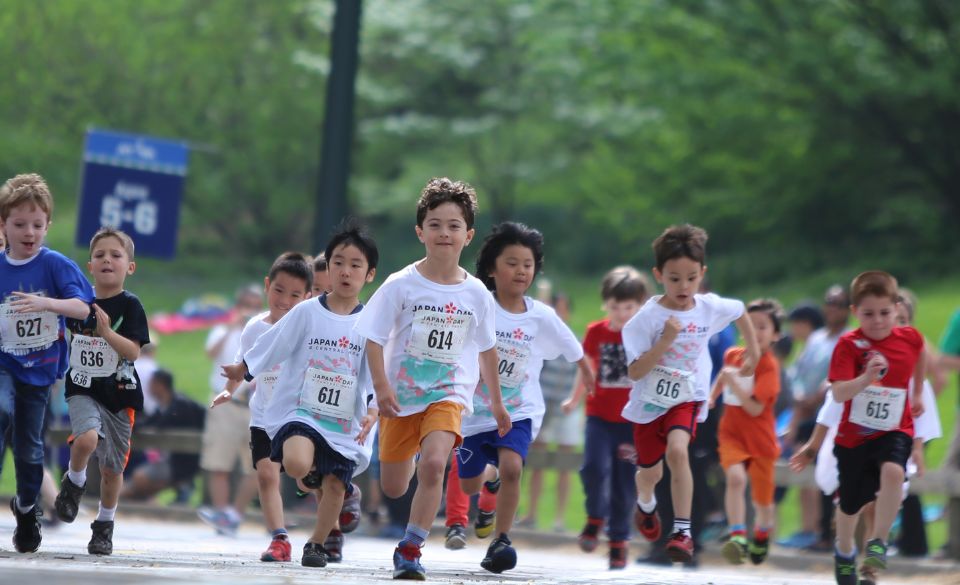
Kids Running Shoes – A Complete Guide 2022
Page Contents
There are a lot of things to consider when buying running shoes for your child. With all the options on the market, how do you know what’s right for them? In this blog post, we’ll outline the different types of shoes available and what you need to look for when making a purchase. We’ll also share some tips on how to get your child started in running. Let’s get started!
Kids Running Shoes – What You Should Know?
There are several reasons why parents should consider buying kids running shoes.
First, kids are constantly on the move and need shoes that can keep up with their active lifestyles. Running shoes also provide kids with the support and stability they need to avoid injuries.
Additionally, kids’ running shoes are designed to be comfortable and durable, so kids can wear them all day long without having to worry about them falling apart.
Finally, running shoes can help kids stay healthy and fit by encouraging them to get out and move around more.
There are several types of kids running shoes available on the market, so it is important to choose the right pair for your child. The most important factor to consider when choosing running shoes for kids is the child’s foot type.
Some children have high arches, while others have flat feet. It is important to choose a shoe that provides support for the child’s foot type to avoid injuries. Additionally, you should consider the child’s age and size when selecting a pair of running shoes. Kids’ shoes come in different sizes and widths, so it is important to find a pair that fits the child properly.
Finally, you should decide what type of surface the child will be running on. If the child will be running on pavement, you will need to choose a different type of shoe than if the child will be running on grass or dirt.
When it comes to kids running shoes, there is no one-size-fits-all solution. The best way to find the right pair of shoes for your child is to take them to a professional shoe fitter and have their feet measured. This will ensure that you get the right size and width for your child’s feet.
Additionally, a professional shoe fitter can help you determine which type of shoe would be best for your child based on their foot type and the types of activities they participate in.
Brands That Make Kids Running Shoes
Many brands make kids running shoes. Some of the more popular brands include Nike, Adidas, New Balance, and Puma. Each brand has its unique style and features that appeal to different types of runners. Nike is known for their innovative design and technology, while Adidas is known for its comfortable and durable shoes and Puma is known for their stylish and trendy shoes. While this may be debated, all of these models have a range of running shoes that can fit your child’s feet.
When choosing a pair of running shoes for your child, it is important to consider their individual needs and preferences. Some children may need extra support or cushioning, while others may prefer a lighter-weight shoe. It is also important to consider the type of surface they will be running on, as some shoes are better suited for different terrains.
If you are unsure of what type of shoe your child needs, it is always best to consult with a professional. They will be able to assess your child’s individual needs and help you choose the right pair of shoes.
What Are 3 Types Of Running Shoes
There are three categories of running shoe support: neutral, stability, and motion control (high support).
Neutral shoes: They can work for mild pronators but are best for neutral runners or people who supinate (tend to roll outward).
Stability shoes: These have extra support in the form of a medial post (a harder piece of foam on the inner edge of the midsole) to prevent overpronation.
Motion control shoes: They have a very firm medial post and other features designed to control excessive pronation. They’re the heaviest and least flexible shoes. If you have severe pronation, your doctor or physical therapist may recommend a motion control shoe.
Generally, kids are recommended to either run barefoot or use a neutral shoe, as this allows their feet to develop naturally.
If you’re not sure what type of shoe you need, ask a salesperson at a running specialty store to observe your gait and make recommendations. It’s also important to pay attention to how a shoe feels on your foot. The best way to do that is to go to a store that specializes in running shoes and ask to try on several different types. Take them for a test walk or run around the store. If a shoe doesn’t feel comfortable from the start, it’s probably not going to get any better with time.
Once you’ve found a shoe you like, keep track of how many miles you run in it so you’ll know when it’s time to replace it. Most shoes last between 250 and 500 miles, although that varies depending on your weight, running style and the surface you run on. You may be able to get more miles out of a stability shoe than a neutral shoe because the medial post helps keep the midsole from breaking down as quickly.
If you have any foot problems or injuries, talk to your doctor or physical therapist before buying new shoes. He or she can assess your needs and make recommendations. When in doubt, it’s always best to be on the side of more support rather than less.
How To Get Kids Into Running
There are many benefits to getting kids into running at an early age. Running can help improve cardiovascular health, build strong bones and muscles, and instil a sense of discipline and accomplishment.
Here are a few tips on how to get your kids into running:
– Start slow and build up gradually. Don’t expect your child to be able to run long distances right away. Start with short runs or walks, and gradually increase the distance as they get stronger.
– Make it fun! Choose a route that has interesting landmarks or scenery along the way. Make a game out of it by seeing who can spot the most birds or other animals along the way.
– Create a goal to work towards. Whether it’s running a 5K race or just being able to run non-stop for 30 minutes, having a goal will give your child something to strive for.
– Encourage them with positive reinforcement. Congratulate them on their accomplishments, no matter how small. This will help them to stay motivated and keep running.
With a little patience and effort, you can get your kids into running and help them enjoy all the benefits that come with it.



